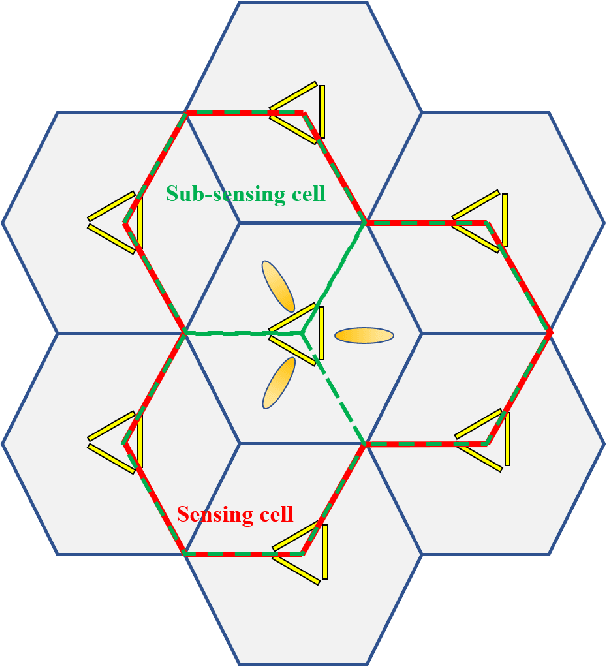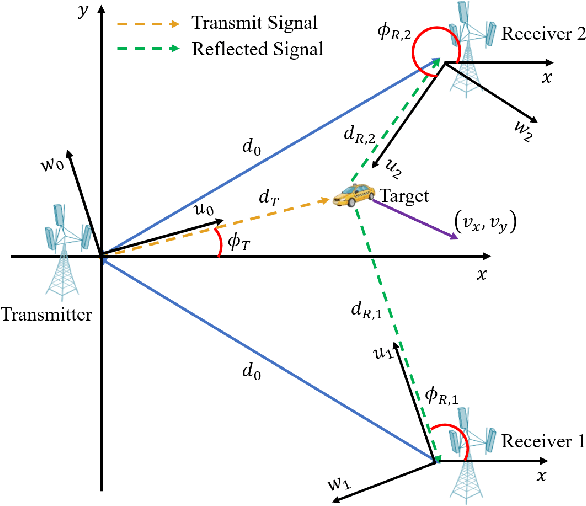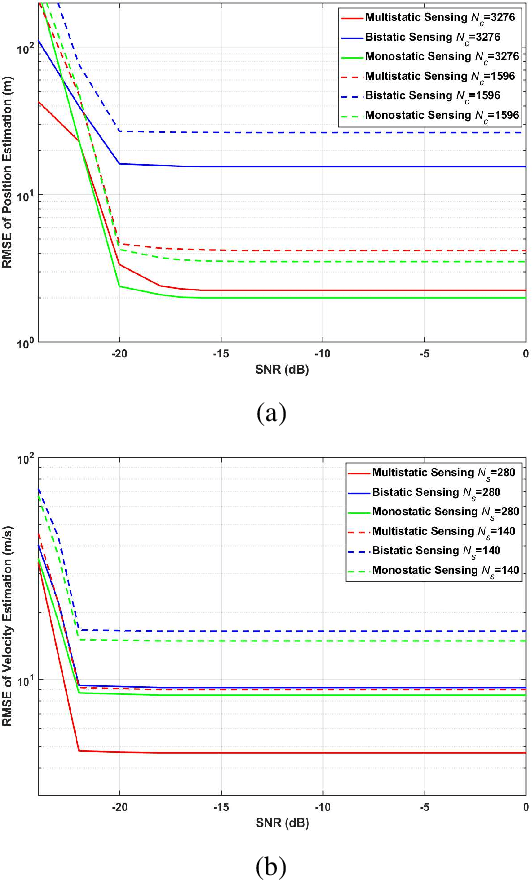Zixiang Han
Multistatic Integrated Sensing and Communication System in Cellular Networks
May 22, 2023



Abstract:A novel multistatic multiple-input multiple-output (MIMO) integrated sensing and communication (ISAC) system in cellular networks is proposed. It can make use of widespread base stations (BSs) to perform cooperative sensing in wide area. This system is important since the deployment of sensing function can be achieved based on the existing mobile communication networks at a low cost. In this system, orthogonal frequency division multiplexing (OFDM) signals transmitted from the central BS are received and processed by each of the neighboring BSs to estimate sensing object parameters. A joint data processing method is then introduced to derive the closed-form solution of objects position and velocity. Numerical simulation shows that the proposed multistatic system can improve the position and velocity estimation accuracy compared with monostatic and bistatic system, demonstrating the effectiveness and promise of implementing ISAC in the upcoming fifth generation advanced (5G-A) and sixth generation (6G) mobile networks.
Using Loaded N-port Structures to Achieve the Continuous-Space Electromagnetic Channel Capacity Bound
May 25, 2022



Abstract:A method for achieving the continuous-space electromagnetic channel capacity bound using loaded N-port structures is described. It is relevant for the design of compact multiple-input multiple-output (MIMO) antennas that can achieve channel capacity bounds when constrained by size. The method is not restricted to a specific antenna configuration and a closed-form expression for the channel capacity limits are provided with various constraints. Furthermore, using loaded N-port structures to represent arbitrary antenna geometries, an efficient optimization approach is proposed for finding the optimum MIMO antenna design that achieves the channel capacity bounds. Simulation results of the channel capacity bounds achieved using our MIMO antenna design with one square wavelength size are provided. These show that at least 18 ports can be supported in one square wavelength and achieve the continuous-space electromagnetic channel capacity bound. The results demonstrate that our method can link continuous-space electromagnetic channel capacity bounds to MIMO antenna design.
 Add to Chrome
Add to Chrome Add to Firefox
Add to Firefox Add to Edge
Add to Edge